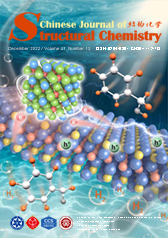
Cover Picture
Ultrathin ZnIn2S4 Nanosheets
Supported Metallic Ni3FeN for Photocatalytic Coupled Selective
Alcohol Oxidation and H2 Evolution
Mengqing Li, Weiliang Qi, Jiuyang Yu, Lijuan Shen, Xuhui Yang, Siqi Liu* and Min-Quan Yang*
Submit a ManuscriptEnhanced Photothermal Selective Conversion of CO2 to CH4 in Water Vapor over Rod-Like Cu and N Co-Doped TiO2
Ji-Chao Wang, Xiu Qiao, Weina Shi*, Huiling Gao*, Lingchen Guo
Chin. J. Struct. Chem. 2022, 41, 2212033-2212042 DOI: 10.14102/j.cnki.0254-5861.2022-0191
December 2, 2022
CO2 conversion, photothermal catalysis, rod-like, TiO2, co-doped
ABSTRACT
Enhancing
catalytic efficiency and selectivity is critical issues for CO2 conversion. The rod-like Cu/N co-doped TiO2 samples (Cu/N-TiO2)
were synthesized by the electrospinning-calcination method. The substitutional
Cu and interstitial N doping not only enhanced visible-light absorption
ability, but also formed the Ti(III) sites. The obviously synergistic effect
between the photocatalysis and thermalcatalysis appeared for CO2 conversion over the 8-Cu/N-TiO2 catalyst. After 9 h
visible-light-illumination at 160 ºC, the CO, CH4 and O2 yields reached 49.7, 1455.1 and 2910.2 μmol/gcat, respectively. In
the 7th cycling, the yields of two main CH4 and O2 products were slightly down by less than 11.5%, and the selectivity of CH4 product kept above 98%. Combined with the theoretical surface mode, Cu/N
co-doping could promote the adsorption-ability for H2O and CO2 molecules and reduce activation-energy for CO2 conversion. Hence,
the co-doping construction showed a great significance of designing efficient photothermal
catalysts for the CO2 conversion application.









